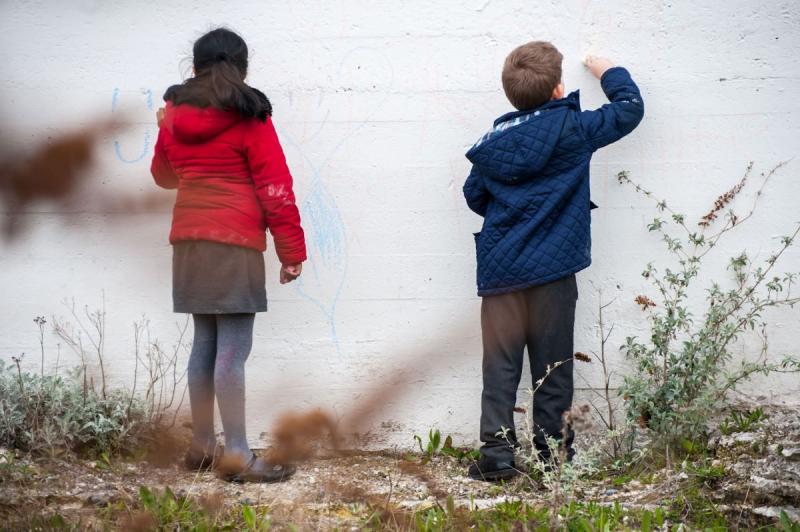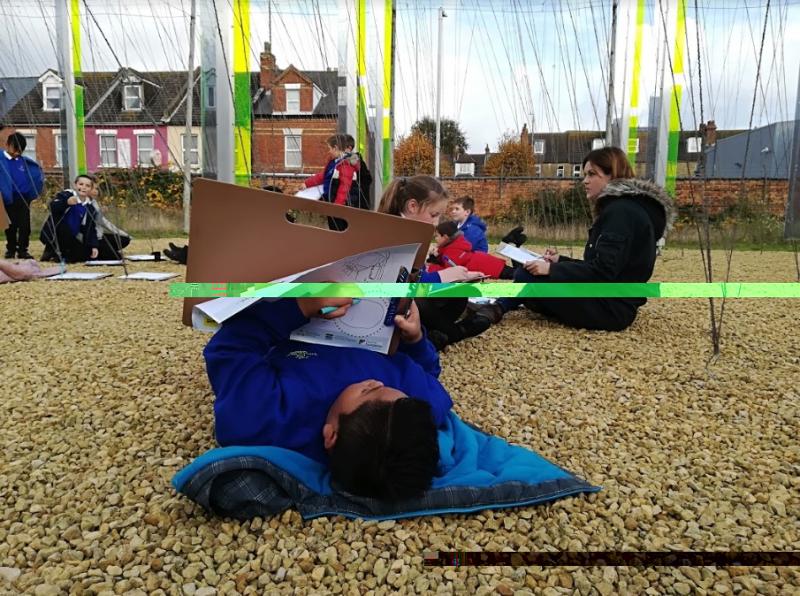Beacons by Conrad Shawcross (2021) is the largest public sculpture to be commissioned by children
Photo: John Sainsbury
Putting arts education in place
With the general election looming, Jason Jones-Hall explains why all parties should embrace an arts-led approach to place to enhance our children’s education.
In its 2024 Report Card, the Cultural Learning Alliance sets out its priority asks for general election manifestos. Its goal, in essence, is to ensure there is a place for arts education in our schools. This works equally well when flipped: schools’ arts education can play a vital role in place or places. Or, flip it again, how can an arts-led approach to place – our towns and cities – combine to enhance our schools and education?
Regional development, devolution, boosting the fortunes of ‘left-behind’ towns and cities, regeneration … all of these have always been ‘a thing’ and always will be. Children and young people have an important – if not crucial – part to play in this, and yet they are all too often under-represented, if considered at all.
Data-led approach
To understand why, take a look at our coastal towns and cities – as good an example of some of the most significantly left-behind areas as any in the country. Recent census data shows exactly where some of the most significant issues lie, with startlingly low rates of economic activity in these left-behind towns and direct correlations to age-based demographics:
● 71% of coastal towns had slower population and employment growth compared with 47% of non-coastal towns
● Population declined in 32% smaller seaside towns compared with only 16% of non-coastal towns
● 30% of the resident population in small seaside towns were aged over 65 years compared with 22% in small non-coastal towns
Through Five10Twelve’s recent work researching and developing place-based capital case studies, we found the significance of this issue was not lost on larger coastal cities. Plymouth, for example, puts a major focus of its long-term regeneration strategy on population growth and, specifically, retaining and attracting more children and young people.
Local plans and strategies are being built around such long-term goals, typically spanning two decades or more – the formative years of young residents as they grow into adulthood. While such place plans and strategies may be built partly with children and young people in mind, they are rarely – if ever – built with them or for them.
Planning begins with children
The Royal Town Planning Institute (RTPI) recognises this in its Children and Town Planning Report of 2021, saying “good town planning should aim to meet children’s needs as part of an inclusive and integrated society. To do this effectively children should have a say in what these places look like”. Put more simply, if you want to instil pride of place, build stronger, more resilient connections between a town and its people and support a greater sense of identity and belonging in a community, where better to start than in our schools?
Continues…
 Pioneering Places, Ramsgate. Photo: John Sainsbury
Pioneering Places, Ramsgate. Photo: John Sainsbury
The problem is that town planning is – let’s face it – a pretty dry subject. This is where arts, culture and creative education comes in. Arts and creative practice have a unique ability to make connections – with people, with places, with history and heritage, with and between towns and people.
So what happens when we step away from our iPads and digital devices and start to see our own towns, cities and built environment as a learning platform? The places we live in can provide a rich environment and resources to inform any curriculum and enhance any learning.
All of this can – and should – start at primary school.
Examples of good practice
At Five10Twelve, we have seen and been involved with countless examples of good practice in this field, from our current work with Barnsley’s Cultural Development Fund (CDF) programme, including Heart of the Wood, to Pioneering Places – the largest of the UK’s Great Place schemes – with innovative place-based educational programmes for schools and young people across Canterbury, Dover, Folkestone and Ramsgate.
In Folkestone, this took the form of primary school workshops delivered by the Architectural Association’s Little Architect and led by Creative Folkestone. This empowered young children to learn about the history and heritage of their local area, thinking about how and why different buildings serve different purposes and even learning the complex maths involved in designing their own scale models.
Continues…
 Folkestone Gasworks, Pioneering Places, Creative Folkestone. Photo: Lola Luiz Garrido
Folkestone Gasworks, Pioneering Places, Creative Folkestone. Photo: Lola Luiz Garrido
Meanwhile, in Thanet, Turner Contemporary worked with Turner prize-winning collective, Assemble, over eighteen months to empower children to not just engage more directly in their hometown, but to help to shape it too. After a series of lessons and workshops covering everything from developing critical thinking to map making, rebuilding the classroom, observing and commenting on the built environment and developing team working skills, two groups of primary school children developed a brief and commissioned world-renowned artist, Conrad Shawcross, to produce a new public art sculpture for Ramsgate.
The planning and learning from the Turner Contemporary and Assemble project has now been produced in an updated second edition toolkit for primary schools, featuring over 30 different exercises and lesson plans, ranging from 5 – 60 minutes, available as a free download from the new-look Cultural Placemaking website.
While the schools involved in these innovative projects were mindful that they were taking something of a leap of faith, the experiments certainly paid off, with both of the schools involved in the Thanet project seeing the potential of looking more closely at their local areas and introducing more local-based learning into their teaching projects and the Folkestone school bringing in changes to include place and arts-based learning across its whole curriculum.
And what of the children?
This brings us back to the core purpose of education itself and the Cultural Learning Alliance 2024 Report Card. The four key system changes it asks for in all manifestos are all underpinned by three key principles:
● “An emphasis on a rounded learning experience for the personal development and wellbeing of the ‘whole child’ – for the present as well as for the future
● A focus on representation, breadth and relevance across the Arts curriculum, resources and practice
● A commitment to ensuring that the cultural sector can respond strategically and collaboratively to meet the needs of young people in schools and in their communities, and is resourced specifically to support this work.”
Connecting arts education with place can be a powerful method for achieving these aims.
Jason Jones-Hall is Director of Development at Five10Twelve.
![]() fivetentwelve.com
fivetentwelve.com
![]() @Five10Twelve
@Five10Twelve
![]() Jason Jones-Hall
Jason Jones-Hall
This article, sponsored and contributed by Five10Twelve, is part of a series sharing best practice in cultural placemaking.
Join the Discussion
You must be logged in to post a comment.